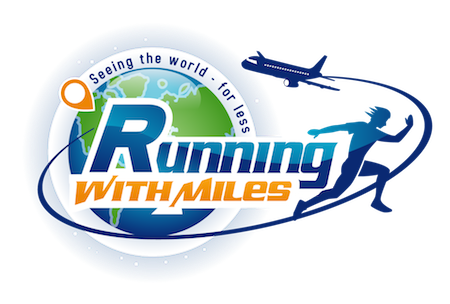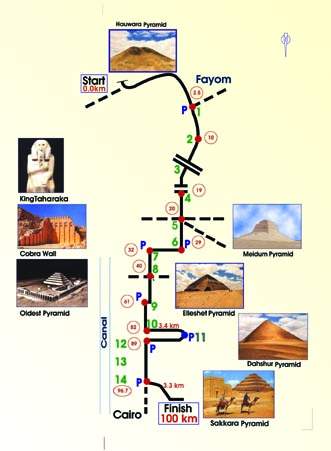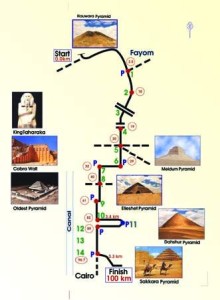Recently, I mentioned that the thought had crossed my mind about a somewhat elusive event for me – the Pharaonic 100KM in Cairo, Egypt. It had long been one I had thought about and one that actually got me into running the longer distances. This year, it looks like it will be the year to meet it head-on!
Planning for Pharaonic Trip in Cairo
I still need to put some pieces together and I am waiting to hear back from the directors, but it looks like I will be a go for the 2014 100KM Pharaonic race! For those of you non-runners, a marathon is an actual distance of 26.2 miles. Anything past that distance is classified as an ultra-marathon. The shortest (normal) ultra is the 50km (31 miles) distance. After that comes the 50 milers and then the 100km (62 miles).
Preparing the Body
Nutrition and Fueling
Running 62 miles is not just a matter of working the numbers according to what you can do a marathon in. There are a lot of factors that begin to come into play when you cross that marathon threshold. Nutrition is one of them. The human body stores glycogen which is the energy (carb-based) that fuels our muscles on in races. Marathoners deal with depleting those stores of glycogen which is why many runners hit what we call “The Wall” – the point in a marathon where you feel as if you cannot run anymore. A good way to avoid that is to use energy gels/bars/tabs throughout the race to replenish those depleted supplies.
While that form of replenishment works fine for marathons, most people actually need something more solid as a fuel source when you are getting into higher miles. For that, people need to learn to eat actual foods on the run! It may seem almost impossible to eat lasagna while running (and who would want to?!), but it is something that you can train your body to do (eating from a styrofoam cup helps too). It is common to find ultramarathoners eating everything from potatoes (dipped in salt for the sodium) to chili, to sandwiches, to pizza, to fruits, candy, etc. My personal favorites are grilled cheese sandwiches (with a lot of mustard for that sodium) and pizza. 🙂
Fortunately, I am really used to that type of eating-on-the-run having run many ultras and trained many times in distances over 30 miles. So, that part of it will not take too much prep.
Training Schedule
The part that will is the training schedule. I have what I think looks like a pretty great training program. It has two speed workouts per week (one of repeats, one of a mild tempo) and back-to-back long runs on the weekend. The normal part of the schedule calls for a 3 hour run followed by a 4 hour run the next day. It gets as high as a 4 hour run followed by a 5 hour run. Then, the rest of the week totals about 25 miles. So, those long weeks will have me running just about 80 miles.
Depending on how I am doing with the schedule, I may insert a couple of evening jogs in as well to help get the miles up a little more. This could be one of the tougher races I have done and I want to be as prepared as possible!
What I Might Face
From reading the scattered reports on this race, it seems that the vans that are given to crew each runner may actually be something of a disappointment for planning purposes. By this I mean that some have mentioned not seeing their van at all for the first 23 miles while another runner reported that his driver/security guard did not speak any English so there was no way to convey his wishes for crewing. Also, they chose to eat from his food for the race. 🙂 Things like that can be difficult to plan for because you do not want to carry too much on you, but you do want to be prepared in case you are out of contact with the van for a very long time (there are no water stops along the way). The last thing I want is to be out of water/food and have to keep running another 13 miles because my van is nowhere to be found!
Another factor to consider is the terrain. It is in the desert. Just because it is in November doesn’t mean it will be cold. The temperatures can and will get up there. Fortunately, my training right now should help with that as the sun here is excruciating!
Finally, once we get back to Cairo, the traffic can become a concern. I know this from my trip there on my run around the world. It was very difficult to find anyplace to step out of the vehicle, let alone run. Granted, this will be somewhat outside of the city, but reports are that the drivers still are doing a lot of honking at the runners, especially as it gets darker (hence the 5PM cutoff).
Why Do It
It sounds like a really fun event! Running in the footsteps and on the route of a race established centuries ago? Seeing pyramids along the way and finishing near some of the greatest pyramids in Egypt? Running a race that very people have actually run, and fewer Americans (only 4 Americans that I have found)?
It is definitely going to be an interesting race and one that should be a cultural experience. I am definitely not going to win (winner does it in 8 hours), but I would like to make a respectable showing and keep the cutoff quite a bit away from me.
Being able to write a report about a race that does not get a lot of attention is something that I want to do more. Do I think that many of you will go run it? No, but I think that many of you may get a kick out of it. Plus, it would provide the desert addition of the 100km distance to (hopefully) go with another report I would like to write one day – the 100km race in the heart of Antarctica.
Preparing the Travel
Booking the travel components for this should actually be pretty straightforward. I am more than likely going to fly Egypt Air (I have flown it before and found it more than suitable) as it provides the best times for me. Booking it is the only thing I am waiting on right now. I may use my Aegean miles as Aegean only requires 25,000 miles to go from Europe to North Africa round-trip. I also may use some Barclay miles or UR points to pay for the ticket since I really do not want to use cash on it.
As for lodging, there is a race hotel and the prices are quite low. That is the case with a lot of hotels in Cairo, so I may even book at a different place for the first night just to have more places to review. If not, I will just stay at the race hotel to simplify transportation. Having a cheap race hotel is a big plus and takes some of the strategizing (fun) out of it.
Summary
So, I think you can tell that I am really intrigued about this race and really hoping that everything works out to allow me to run it. I am ramping up my miles now and will begin the actual race schedule next Monday. If nothing else, I can easily convert it to a marathon schedule as I will be running the Tiberias Marathon in January (more on that to come).








Sounds like an amazing experience!
That does sound fun but if there are mixed reviews about the vans, I would just train as if there aren’t any vans at all (similar to the 4 desert series.) I’d train with a small backpack with hydration camelbak. Since it’s in the desert with sand, I’d also make sure to put those windproof covers on my shoes and face. Oh and don’t forget sunscreen! Have a blast!
Excellent tips. I do plan on bringing a Camelbak but will go with a waistpack for the first part of the race. I figure that I will have more people/crews around me early on (there are several teams that compete) and I can get some help or refills from them if I really cannot find my van. After that, I will have the Camelbak to put on.
Thanks for the advice!